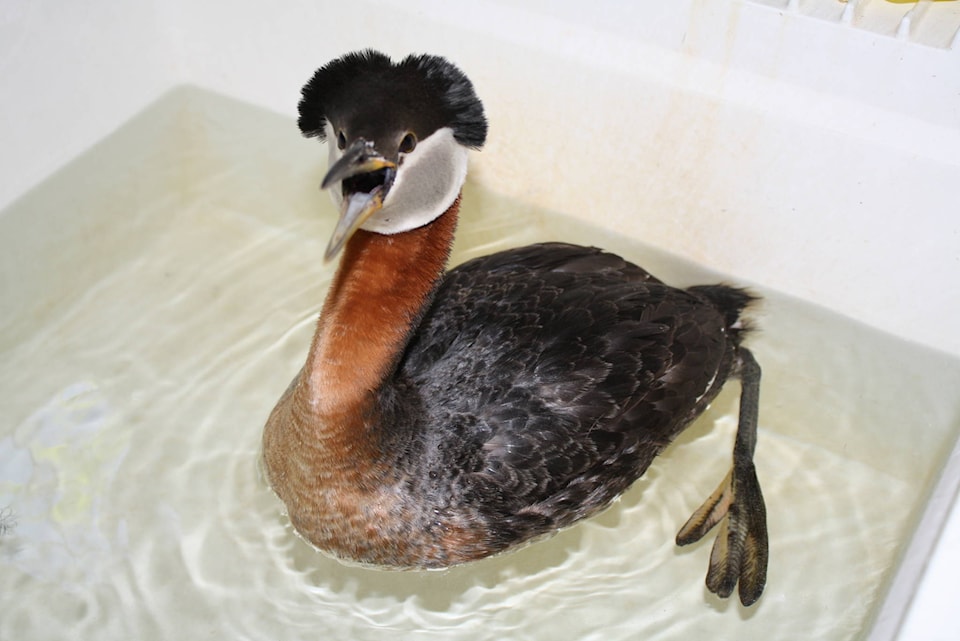Sylvia Campbell
Special to the News
The North Island Wildlife Recovery Centre admitted a red-necked grebe from Port Alberni on Sunday, May 21 after the bird was found on the ground in a lumber yard. The grebe did not have any significant injuries, so it was fed and observed for a couple of days and then returned to the water.
The red-necked grebe is a nearly circumpolar inhabitant of northern waters. In North America, it winters on northern Atlantic and Pacific coastlines. It moves inland to breed on small lakes and other suitable water bodies in the northern prairies, western parklands, and forests, north to near tree line. It is a large, highly pugnacious (aggressive) grebe that takes a variety of aquatic prey with its robust bill. North American and east Asian red-necked grebes are larger than their counterparts in Europe and western Asia.
On its breeding lakes, this boldly marked grebe betrays its presence with frequent raucous calls. It is territorial and interspecifically aggressive, commonly threatening or making underwater attack dives against other water birds that enter its breeding territory. Outside of migration, it is rarely seen in flight, spending most of its time swimming and diving. Away from breeding areas, it is generally quiet and unobtrusive, although groups of spring migrants may engage in calling and courtship at stopover areas.
Red-necked grebes have elaborate courtship rituals, but many individuals arrive on their breeding grounds already paired, and their early pair-formation displays are only infrequently observed on breeding lakes. Pairs cooperate in territorial defense, nesting activities and rearing of young.
Nest building often begins as soon as grebes arrive on breeding lakes, with nest-building activity peaking in May throughout most of their range. Nests are completed in as little as one day, with one- to 14-day delays from initiation of nest-building to laying of the first egg, depending on the number of platforms built and amount of agonistic interaction with neighboring pairs.
Incubation is nearly continuous. If disturbed, adults typically cover their eggs with wet nest material before leaving, presumably to conceal eggs. Covering eggs also may protect them from cooling or overheating in the sun. Length of incubation bouts is highly variable; shorter bouts during hot weather.
Parents carry their newly hatched young on their backs, where they are brooded and fed until they learn to swim and dive on their own.
Wild ‘n Free is written by Sylvia Campbell, NIWRA co-founder and can be reached at wildlife@niwra.org. Mark NIWRA Family Day on your calendar June 17th.
